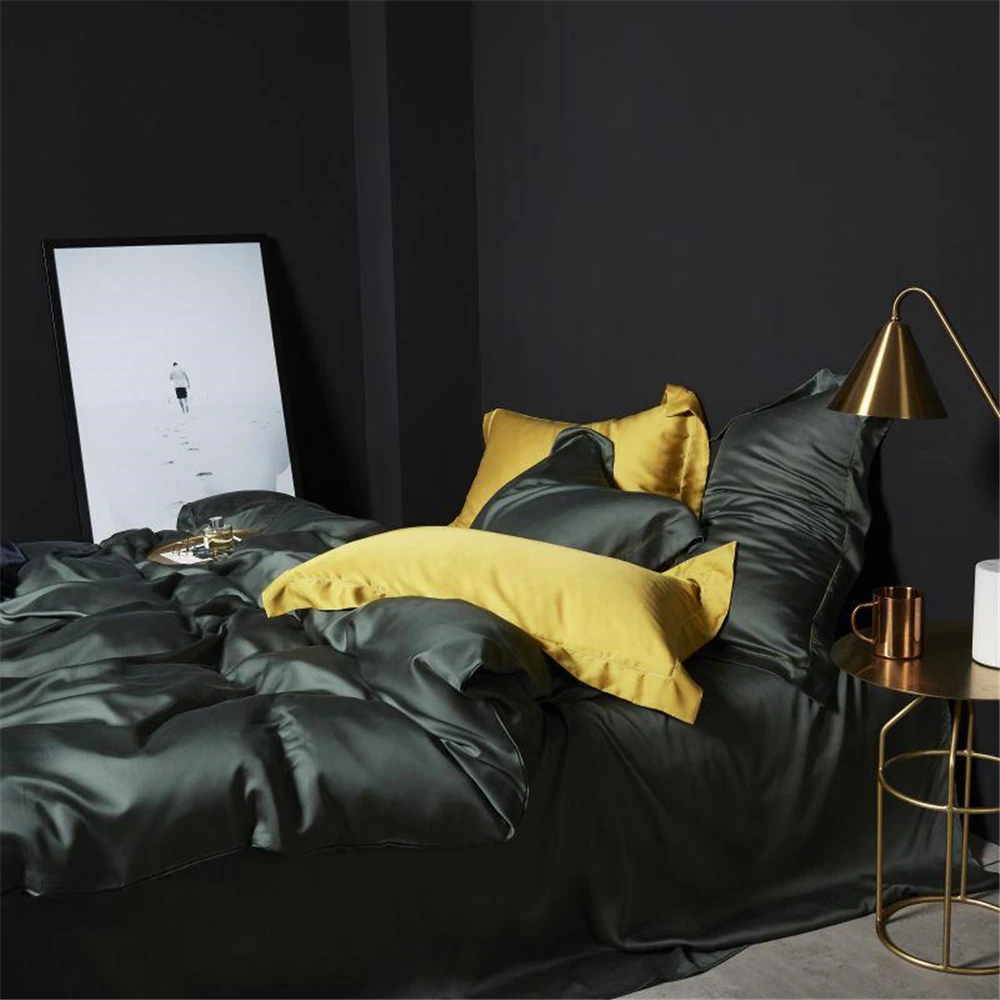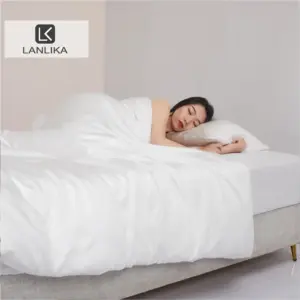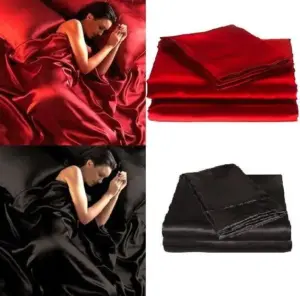Introduction: Navigating the World of Silk Bedding
The allure of silk bedding is undeniable. With its natural cooling properties, incredible softness, and luxurious feel against the skin, silk has become increasingly popular for those seeking the ultimate sleep experience. Yet for many, the journey to finding the perfect silk bedding can be confusing. When browsing online or in stores, you’ll encounter terms like “charmeuse,” “satin weave,” and “momme weight” that can make your decision feel overwhelming.
One of the most common sources of confusion is the difference between silk types and silk weaves. Many shoppers mistake one for the other, not realizing that the weave pattern can significantly impact how your sheets feel, look, and perform over time. Understanding the fundamental guide on silk weaves is essential for making an informed purchase.
This comprehensive guide will analyze different silk weaves specifically for bedding, helping you determine which option best suits your sleeping preferences and priorities. We’ll explore the critical relationship between weave patterns and momme weight (silk’s equivalent to thread count), and provide clear comparisons to help you navigate this luxurious landscape.
As people continue to invest more in quality sleep essentials, understanding these distinctions becomes increasingly important. After all, silk bedding has been treasured for centuries across cultures precisely because the right silk can transform an ordinary night’s sleep into a truly extraordinary experience.
Understanding Silk: Type vs. Weave – A Crucial Distinction
Before diving into specific recommendations, it’s essential to clarify a fundamental distinction that even many retailers get wrong: the difference between silk types and silk weaves.
Silk Types refer to the source and species of silkworms that produce the silk fibers:
– Mulberry Silk: Produced by silkworms fed exclusively on mulberry leaves, this represents over 90% of the world’s silk production. It creates long, uniform fibers known for their smooth texture, durability, and hypoallergenic properties—making it the gold standard for bedding.
– Tussah/Wild Silk: Harvested from wild silkworms that eat a varied diet, creating shorter, coarser fibers with a more textured feel and natural color variations. While beautiful, it’s less common in premium bedding due to its rougher texture.
Silk Weaves, on the other hand, refer to how those silk threads are constructed into fabric:
– The weaving pattern determines texture, appearance, durability, and feel against skin
– The same type of silk (e.g., Mulberry) can be woven in multiple ways for different results
– Weave structure significantly impacts how the bedding performs during sleep
This distinction matters tremendously when selecting bedding. Two sheets made from identical Mulberry silk can feel completely different based on their weave pattern. Understanding the detailed exploration of silk weave types helps clarify why one silk product might feel smooth and cooling while another feels more substantial and insulating.
Most premium silk bedding uses Mulberry silk as the base material, so the remainder of this guide will focus primarily on comparing different weave patterns while assuming Mulberry silk as the fiber type.
The Four Key Factors in Choosing Silk Bedding
When evaluating silk bedding options, four critical factors work together to determine quality:
Weave Type: The pattern used to interlace threads affects texture, appearance, durability, and feel against your skin. Some weaves create a smooth, cool surface, while others provide more texture and insulation.
Momme Weight: This measurement (pronounced “mummy”) indicates the density of the silk fabric. Understanding momme weight in silk bedding is crucial because it determines thickness, durability, and opacity. Higher momme counts generally mean more durable, luxurious fabrics.
Manufacturing Quality: Even with the finest raw materials, poor manufacturing can result in uneven dye absorption, loose threads, or irregular weaving that impacts longevity.
Care Requirements: Different silk weaves have varying care needs that affect maintenance effort and lifespan. Some are more forgiving of machine washing, while others require delicate handling.
These factors interact in important ways. For example, a lower momme weight in a naturally stronger weave pattern might outperform a higher momme weight in a more delicate weave. Understanding these relationships helps you make smarter choices based on your specific needs.
Charmeuse Weave: The Epitome of Luxury Bedding
Charmeuse is often considered the quintessential luxury silk weave for bedding, characterized by a specific satin weaving technique that creates a smooth, lustrous face and a matte back. This distinctive structure is achieved by allowing warp threads to float over several weft threads before interlacing, creating that signature shiny surface on one side.
The resulting fabric offers several distinctive characteristics:
- Texture: Incredibly smooth, almost liquid-like feel against skin
- Appearance: High sheen on the front side, subtle matte finish on the reverse
- Drape: Flows and drapes beautifully around the body
- Temperature: Naturally cooling and moisture-wicking
Charmeuse silk has become synonymous with luxury bedding for good reason. Its smooth surface creates minimal friction against skin and hair, which helps prevent sleep wrinkles and reduce hair breakage. Studies have shown that the low friction coefficient of charmeuse silk can significantly reduce damage to hair cuticles compared to cotton pillowcases.
Pros and Cons of Charmeuse for Bedding
| Pros | Cons |
|---|---|
| Exceptionally smooth against skin | Can be slippery on the bed |
| Reduces friction for hair and skin | More delicate than some weaves |
| Excellent temperature regulation | Requires careful cleaning |
| Luxurious, high-end appearance | Generally higher price point |
| Good drape that conforms to body | Can show wrinkles more readily |
For optimal performance in bedding, charmeuse typically performs best at 22-25 momme weight, balancing softness with durability. The differences between charmeuse and habotai silk become particularly apparent in bedding applications, where charmeuse’s superior drape and smoother finish generally provide a more luxurious sleep experience.
Silk Satin Weave: Understanding the True Luxury Option
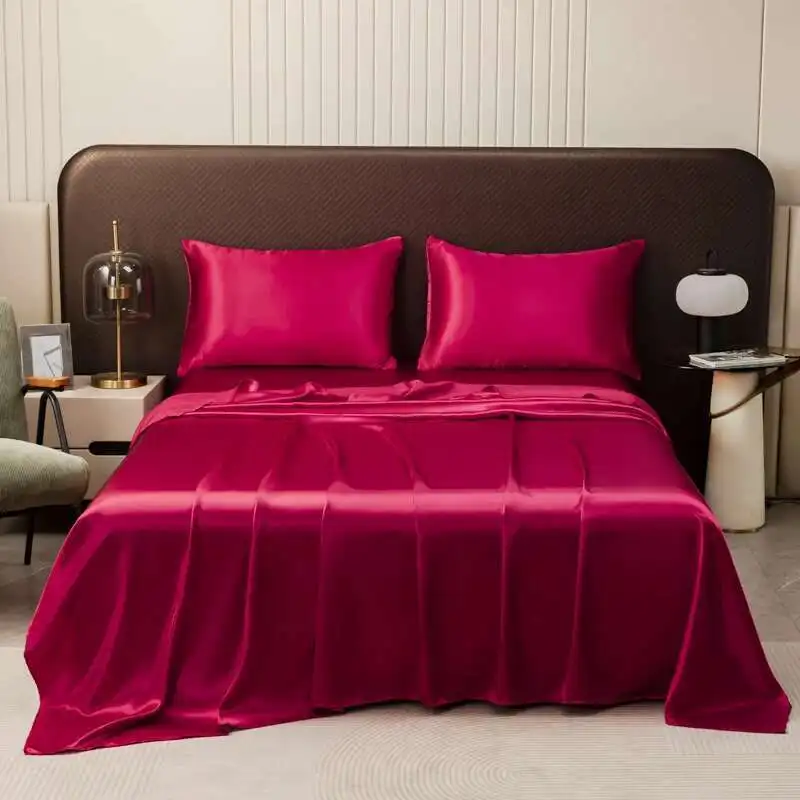
One of the most common misconceptions in silk shopping is confusing satin (a weaving technique) with silk (a fiber). Satin refers specifically to a weaving pattern where four or more warp threads float over a single weft thread, creating that distinctive smooth, shiny surface with a duller back. This pattern can be applied to any fiber—including silk, polyester, or rayon.
When we discuss silk satin, we’re referring specifically to silk fabric woven in a satin pattern. The confusion often stems from the fact that polyester satin (which mimics the look but not the performance of silk satin) has become ubiquitous in the market.
Key differences between silk satin and polyester satin for bedding:
– Silk satin breathes naturally; polyester satin tends to trap heat
– Silk provides natural temperature regulation; polyester often causes sweating
– Silk wicks moisture away from the body; polyester typically doesn’t
– Silk satin has a subtle sheen; polyester satin often has an artificial-looking shine
In bedding applications, genuine silk satin excels in creating a frictionless sleep surface that’s gentle on hair and skin. Our luxury silk bedding sets utilize this weave for its combination of sensory appeal and functional benefits.
The relationship between silk satin and charmeuse can be confusing. While technically different (charmeuse is a specific type of satin weave), in practice, many retailers use these terms somewhat interchangeably for bedding. Generally, charmeuse refers to a lighter-weight satin weave with very specific thread arrangements, while “silk satin” may encompass slightly heavier or different satin variations.
For bedding purposes, both provide similar benefits, though charmeuse typically offers the ultimate in smoothness when crafted at appropriate momme weights.
Understanding Momme Weight: The Density Factor in Silk Quality
Momme weight (pronounced “mummy”) measures the density of silk fabric and serves as a critical quality indicator. Technically, it represents the weight in pounds of a piece of silk measuring 45 inches by 100 yards—though consumers simply need to understand that higher numbers generally indicate heavier, more substantial silk.
Unlike cotton’s thread count, which counts threads per square inch, momme weight measures density more holistically, providing a better indication of silk’s quality and durability. For comparison:
| Momme Range | Equivalent Thread Count | Characteristics | Best For |
|---|---|---|---|
| 12-16 momme | ~300-400 TC | Lightweight, semi-sheer | Scarves, summer garments |
| 19-21 momme | ~500-600 TC | Medium weight, good durability | Entry-level bedding |
| 22-25 momme | ~600-750 TC | Substantial, excellent durability | Premium bedding, year-round use |
| 25+ momme | ~750+ TC | Heavy, exceptional durability | Luxury bedding, heirloom quality |
The relationship between momme and weave is crucial in bedding selection. A 19-momme charmeuse sheet might feel more luxurious than a 22-momme plain weave sheet due to how the weave structure affects the fabric’s hand feel. Understanding these quality measurements in silk sheets helps shoppers make more informed decisions.
For most home users, the 22-25 momme range offers the ideal balance of luxury feel and practical durability for everyday bedding. At this weight, silk maintains its temperature-regulating properties while providing sufficient substance to withstand regular use.
Price typically increases with momme weight, so determining your priorities (maximum softness vs. longevity vs. value) will help guide your selection.
Comprehensive Comparison: Silk Weaves for Bedding
When selecting the perfect silk bedding, comparing different weaves across key performance metrics helps clarify which option best matches your priorities:
| Feature | Charmeuse | Silk Satin | Habotai | Twill |
|---|---|---|---|---|
| Surface Feel | Exceptionally smooth, slippery | Very smooth, slight texture | Smooth but lightweight | Subtle texture, less slippery |
| Appearance | High sheen on front, matte back | Moderate to high sheen | Light sheen | Subtle diagonal pattern, moderate sheen |
| Durability | Moderate (needs careful handling) | Good | Lower | Excellent |
| Temperature Regulation | Excellent cooling | Very good cooling | Good cooling but thin | Good balance, slightly warmer |
| Relative Price | Premium | High | More affordable | Mid-range |
| Maintenance | Delicate care required | Moderately delicate | Very delicate | More forgiving |
| Best Use Case | Luxury pillowcases, special-occasion sheets | Everyday luxury bedding | Summer sheets, travel pillowcases | Long-lasting everyday bedding |
The trade-offs become apparent when examining these characteristics side by side. For instance, while charmeuse offers unparalleled smoothness, it requires more careful maintenance than twill. Similarly, habotai provides a budget-friendly introduction to silk bedding but won’t last as long as higher-end weaves.
Your individual sleeping preferences should guide your choice. Hot sleepers might prioritize the cooling properties of charmeuse or satin, while those focused on longevity might prefer twill. Those with sensitive skin or hair concerns will benefit most from the frictionless surface of charmeuse.
Selecting the ideal silk weave often means balancing these factors against your budget and maintenance preferences. Most luxury buyers find that charmeuse or high-quality silk satin provides the optimal combination of sensory pleasure and practical performance.
Other Silk Weaves: Niche Options for Specialized Bedding Needs
Beyond the most common silk weaves used in bedding, several specialty weaves offer unique characteristics for specific preferences and applications:
Plain Weave Silk (Habotai)
– Characteristics: Simple over-under weave pattern, lightweight, less lustrous than satin weaves
– Best Uses: Summer-weight sheets, budget options, travel items
– Pros: More affordable, very breathable, easier to wash
– Cons: Less durable, typically requires lower momme weights, lacks the distinctive silk sheen
Twill Weave Silk
– Characteristics: Diagonal rib pattern, stronger construction, subtle texture
– Best Uses: Durable everyday bedding, colder climates
– Pros: Exceptional durability, less slippery on the bed, shows fewer wrinkles
– Cons: Slightly less smooth feel, less cooling than satin weaves
Dupioni/Shantung Silk
– Characteristics: Textural weave with characteristic slubs and irregularities
– Best Uses: Decorative shams, bed runners, not recommended for sheets
– Pros: Unique textural interest, substantial feel, interesting light play
– Cons: Too textured for comfortable sheet fabric, can catch on rough skin
Noil Silk
– Characteristics: Made from shorter silk fibers, cotton-like texture
– Best Uses: Specialty applications for those wanting silk benefits without slippery feel
– Pros: Less slippery, more casual appearance, often more affordable
– Cons: Loses many of silk’s signature benefits, rougher texture
Crepe de Chine
– Characteristics: Slightly textured surface with matte appearance
– Best Uses: Specialty pillowcases, decorative elements
– Pros: Good drape, subtle texture adds interest
– Cons: Not as smooth as charmeuse, typically not used for sheets
Our Mulberry silk sheets collection incorporates select specialty weaves for customers with unique preferences, though most luxury bedding consumers prefer the classic appeal of charmeuse or satin weaves for their primary sleep surfaces.
Matching Silk Weaves to Your Sleep Priorities

Selecting the perfect silk weave becomes simpler when you match options to your specific sleep priorities:
For Ultimate Luxury Feel:
– Best Choice: Charmeuse at 25 momme
– Why: Provides the quintessential silk experience with maximum smoothness and substantial feel
– Consider: Requires more careful handling; worth the investment for the unparalleled sensory experience
For Maximum Durability:
– Best Choice: Twill weave at 22-25 momme
– Why: Stronger structural pattern that withstands washing and use better than other weaves
– Consider: Slightly less of the frictionless feel that defines luxury silk, but will last significantly longer
For Sensitive Skin or Hair:
– Best Choice: Charmeuse at 22-25 momme
– Why: The smooth surface minimizes friction against skin and hair follicles
– Consider: The benefits of silk for skin health are most pronounced with this weave, particularly for facial pillowcases
For Budget-Conscious Luxury:
– Best Choice: Silk satin at 19-21 momme
– Why: Provides many of the benefits of higher-end options at a more accessible price point
– Consider: May not last as long as heavier weights, but delivers authentic silk benefits
For Aesthetic Impact:
– Best Choice: Charmeuse for glossy sheen; Dupioni for textural interest
– Why: Charmeuse provides the most characteristic silk luster, while Dupioni offers unique texture
– Consider: Reserving Dupioni for decorative elements rather than sleep surfaces
Your sleeping style and preferences should influence not just the weave choice but also which bedding items you prioritize. Many customers find that investing in silk pillowcases offers the most noticeable benefits, while others prefer complete silk sheet sets for the full experience.
Essential Care Tips for Silk Bedding Longevity
Proper care dramatically extends the life of your silk bedding, with different weaves requiring slightly different approaches:
Washing Guidelines
– Hand washing is always safest, especially for charmeuse and lightweight weaves
– If machine washing, use a mesh laundry bag and delicate cycle with cold water
– Use only silk-specific or enzyme-free mild detergents
– Avoid biological detergents that can damage protein fibers
Drying Techniques
– Never wring silk; gently press water out between towels
– Air dry away from direct sunlight, which can fade and weaken fibers
– Hang charmeuse and satin weaves to maintain their natural drape
– Lay twill weaves flat to prevent stretching
Ironing Recommendations
– Use low heat settings only (silk/delicate setting)
– Iron while slightly damp for best results
– Iron on reverse side when possible
– For charmeuse and satin, iron on the matte side, not the shiny side
Storage Best Practices
– Store fully dry in a breathable cotton bag, never plastic
– Avoid cedar chests which can discolor silk
– Fold with tissue paper to prevent permanent creasing
With proper care, high-quality silk fitted sheets and other bedding items can last for years. Charmeuse and satin weaves typically require more careful handling than twill, but all silk bedding will reward proper maintenance with extended longevity and sustained performance.
Is Silk Bedding Worth the Investment?
The question of value is inevitable when considering premium silk bedding, which represents a significant investment compared to conventional options. To determine if silk is worth it for your situation, consider:
Long-term Value Analysis
– Quality silk bedding (22+ momme) typically lasts 5-7 years with proper care
– Cotton sheets generally need replacement after 2-3 years
– The per-year cost difference shrinks significantly when considering longevity
Performance Advantages
– Silk naturally regulates temperature, adapting to body heat unlike cotton or synthetic fabrics
– Moisture-wicking properties create a drier sleep environment
– Natural proteins in silk contain amino acids that benefit skin over time
Wellness Considerations
– Reduction in sleep wrinkles and hair breakage
– Hypoallergenic properties benefit those with sensitive skin
– Better temperature regulation may improve sleep quality
For many customers, the investment in 100% silk sheets delivers value beyond the luxury experience. The tangible benefits for skin and hair, combined with superior sleep comfort and potential longevity, often justify the higher initial cost for those who prioritize sleep quality and personal care.
Common Questions About Silk Bedding Weaves
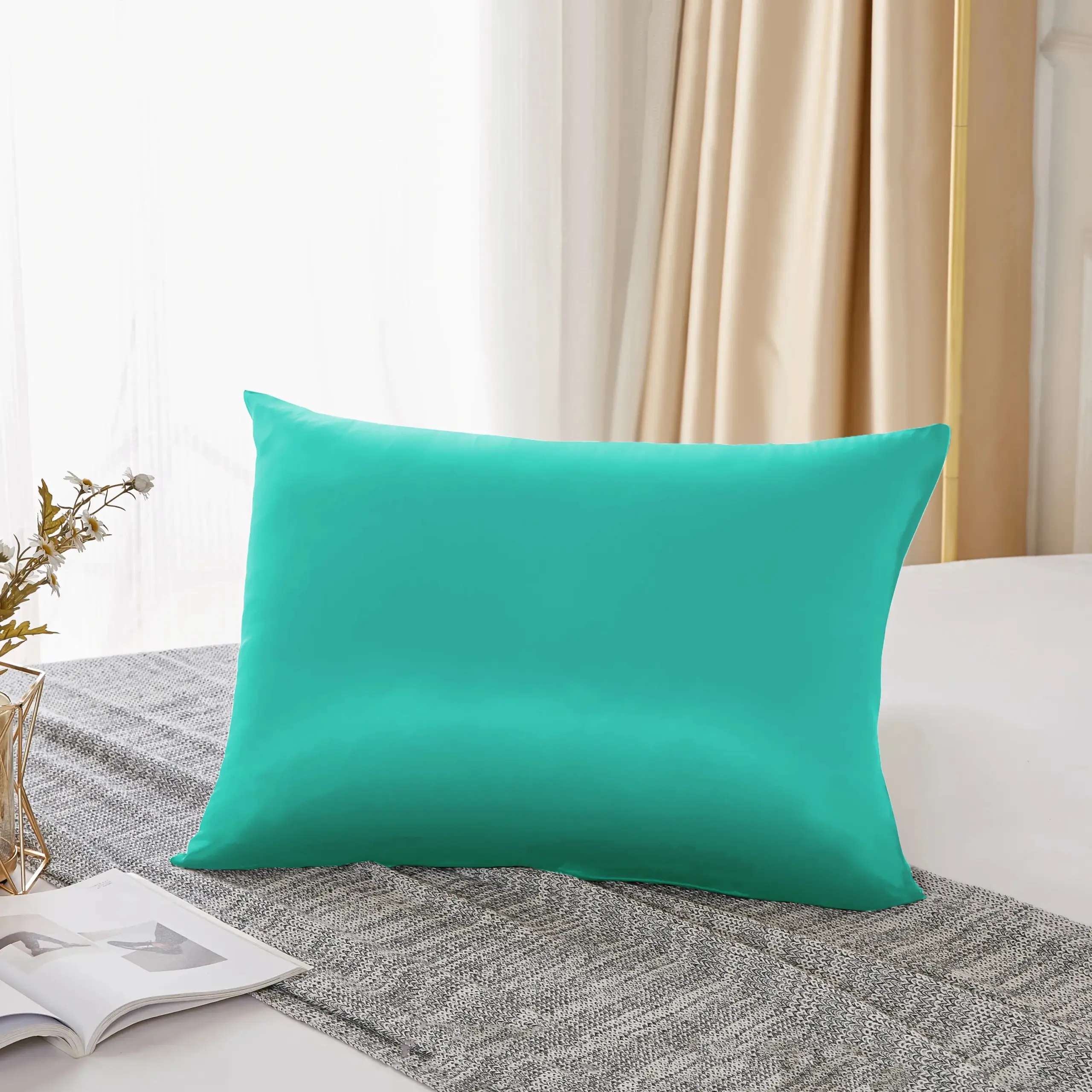
Is silk satin the same as silk charmeuse?
While related, they’re not identical. Charmeuse is a specific type of satin weave characterized by a particular thread arrangement that creates an especially smooth face and matte back. All charmeuse is satin, but not all silk satin is charmeuse. For bedding purposes, both offer similar benefits, though charmeuse is typically considered slightly more luxurious.
How can I tell if I’m buying real silk satin versus polyester satin?
Real silk has a subtle sheen rather than a plastic-like shine. It feels cool to the touch initially but warms quickly. The burn test is definitive (silk burns slowly with an ash you can crush; polyester melts), but more practically, reputable retailers will specify the exact fiber content. Price can also be an indicator—genuine silk products rarely come at bargain prices.
Does the weave affect how silk feels against my skin?
Absolutely. Charmeuse and satin weaves create the smoothest surface with minimal friction, ideal for sensitive skin and reducing hair frizz. Twill has a subtle texture you can feel. Habotai feels lightweight but smooth, while specialty weaves like Dupioni have distinct textures that you would definitely notice against your skin.
Is 19 momme silk good enough for everyday bedding?
For occasional or light use, 19 momme can be adequate, especially in pillowcases. However, for sheets that undergo regular washing and use, 22-25 momme provides significantly better durability and a more substantial feel. Many customers find 19 momme too light for long-term satisfaction as sheet fabric.
Which silk weave is least likely to slip off the bed?
Twill silk tends to stay in place better than smoother weaves. For satin or charmeuse, look for fitted sheets with deep pockets and strong elastic, or sheet fasteners to secure corners. Some manufacturers add a subtle texture to the underside of their satin sheets specifically to address this issue.
How does silk weave affect temperature regulation?
Lighter weaves like habotai provide maximum cooling but minimal insulation. Charmeuse and satin weaves offer excellent temperature regulation with moderate insulation. Twill and heavier specialty weaves provide more insulation while still offering the breathability that makes silk ideal for year-round use.
Learning about the best types of silk for bedding can further clarify these distinctions and help you make the most informed choice.
California King Silk Fitted Sheet, King Size Silk Fitted Sheet, Mulberry Silk Fitted Sheet, Queen Size Silk Fitted Sheet
Price range: $120.04 through $390.79 Select options This product has multiple variants. The options may be chosen on the product page100% Silk Sheets, Green Silk Sheets, King Size Silk Bedding Set, Mulberry Silk Bedding Sets, Queen Size Silk Bedding Set
Price range: $1,246.21 through $1,615.22 Select options This product has multiple variants. The options may be chosen on the product pageKing Size Silk Fitted Sheet, Queen Size Silk Fitted Sheet, Twin Silk Fitted Sheet
Price range: $113.28 through $145.58 Select options This product has multiple variants. The options may be chosen on the product page100% Silk Sheets, King Size Silk Bedding Set, Mulberry Silk Bedding Sets, Queen Size Silk Bedding Set, White Silk Sheets
Price range: $1,000.79 through $1,351.42 Select options This product has multiple variants. The options may be chosen on the product pageBamboo Silk Sheets, Queen Size Silk Fitted Sheet
Price range: $230.24 through $297.88 Select options This product has multiple variants. The options may be chosen on the product pageMulberry Silk Fitted Sheet, Mulberry Silk Sheets
Price range: $486.21 through $944.97 Select options This product has multiple variants. The options may be chosen on the product page
The Environmental Impact of Different Silk Production Methods
The environmental footprint of silk bedding varies considerably based on production methods and processing techniques:
Traditional Silk Production
– Requires boiling silkworm cocoons with the pupae inside
– Typically uses fewer chemicals than conventional cotton farming
– Lower water usage compared to cotton production
– Energy-efficient when traditional reeling methods are used
Peace Silk/Ahimsa Silk Alternatives
– Allows the silkmoth to emerge naturally before processing
– Produces shorter fibers that create a different texture
– Often processed using more sustainable methods
– Usually creates a more textured fabric than conventional silk
Processing Considerations
– Dyeing processes have the largest environmental impact in silk production
– Natural dyes create less vibrant but more eco-friendly options
– Water recycling systems significantly reduce environmental impact
– Some weaves require more intensive processing than others
For environmentally conscious consumers, vegan silk alternatives provide options that mimic many of silk’s benefits without using animal products. These plant-based alternatives continue to improve in quality, though they don’t yet replicate all of silk’s natural properties.
When caring for silk bedding, selecting eco-friendly detergents and air-drying rather than machine drying not only extends the life of your bedding but also minimizes the ongoing environmental impact of your luxury sleep experience.

